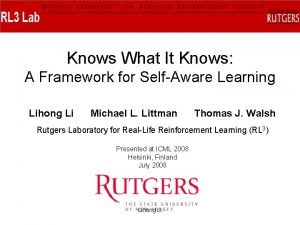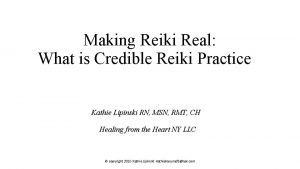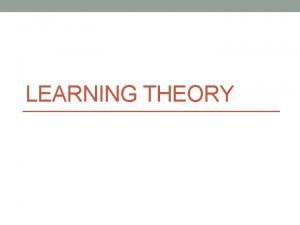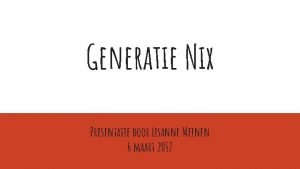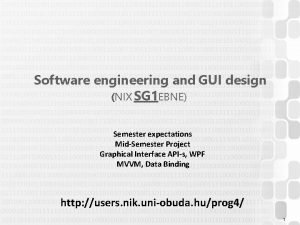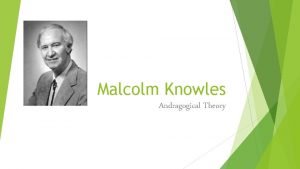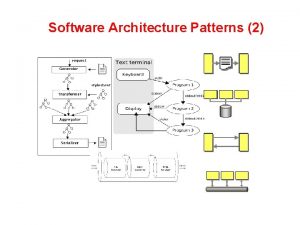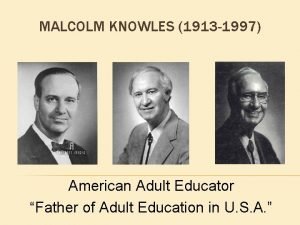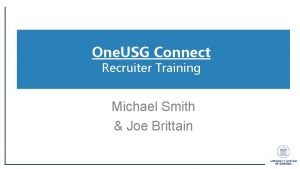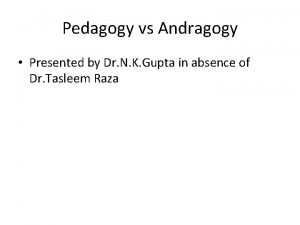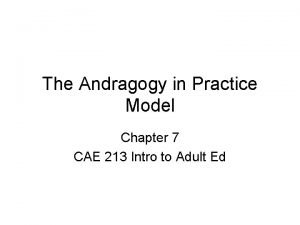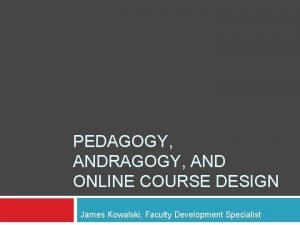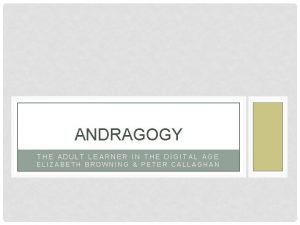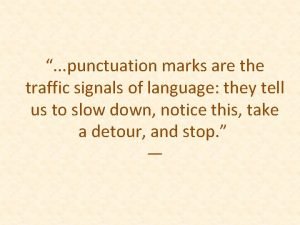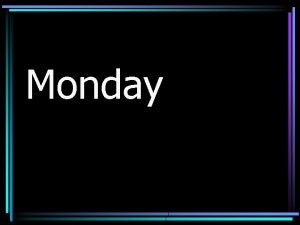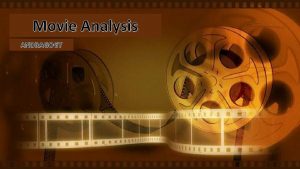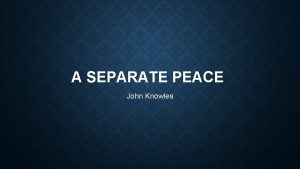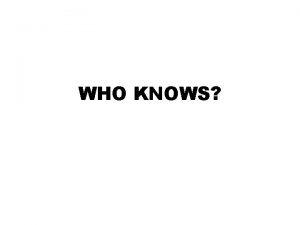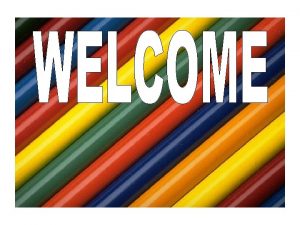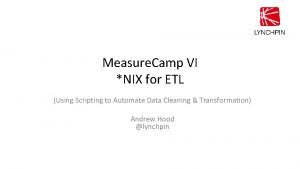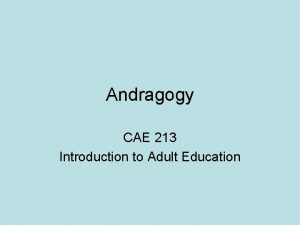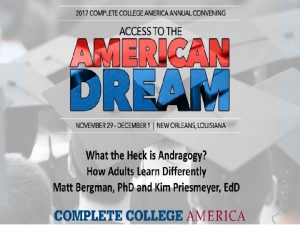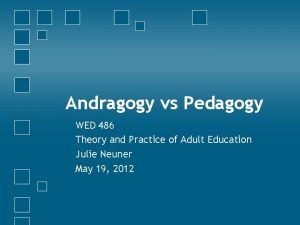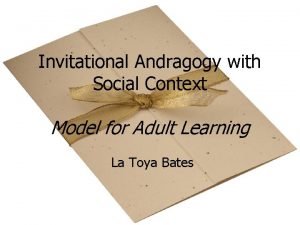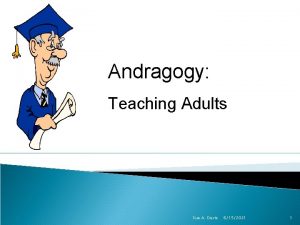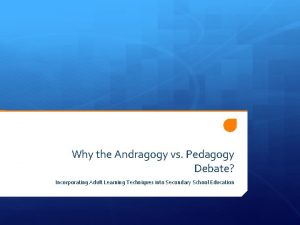Knowles Knows Using Andragogy in Training Kathie Nix























- Slides: 23

Knowles Knows: Using Andragogy in Training Kathie Nix, Jill Cerny, Tennille Merkle, and Jennifer Warrner Ball State University EDAC 634 Spring 2016

Welcome! ¢ ¢ ¢ The session Ground rules Introductions

Today’s Agenda ¢ ¢ ¢ Defining andragogy Creating a learning environment Developing objectives Delivering the training Evaluation Recap/conclusion

What is Andragogy? ¢ ¢ Andragogy – theory of adult learning Developed by Malcolm Knowles

The Key Phrase ¢ “Please show me what else I need to know. ”

Creating a Learning Environment ¢ Setting the scene l Brainstorming Activity: What makes a good learning environment?

Learning Environment ¢ ¢ ¢ Size of room Accessibility Location Distractions Obstructions Furniture ¢ ¢ ¢ Lighting Climate Microphone Electrical outlets Quality of equipment

Activity: Worst Case Scenarios ¢ ¢ ¢ Work with a partner at your table. Review the scenario. Determine what you could do to either prevent or deal with the problem.

What are Objectives? ¢ Objective – the purpose and expected outcome of training activities

What do Objectives do? ¢ Developed before you develop the session ¢ Help to determine what to include in the session ¢ Written to specify exactly what the learner should be able to do after the training session l Can be knowledge or skills

Good Objectives are: ¢ ¢ ¢ S = specific M = measurable A = attainable R = relevant T = time bound

What’s in an Objective? ¢ Remember the ABCDs of objectives l A = audience l B = behavior l C = condition l D = degree

Formula ¢ Who will do what, by when, and how well? ______will______by_______, _____. ¢ Example: l “You will be able to write good learning objectives by the time you finish this lecture 100% of the time. ”

Ready, Set, Train! ¢ Developing a session

Think of Today’s Session When you came in to the room today you were ______. l Then we started with _______ and _______ by having you share your information and experience. l These two activities ______ to the topic we are using today. l

Think of Today’s Session ¢ ¢ ¢ We went over __________ __ _____, breaking it down and providing details. We included a _______ for you to review. Then we got into the _______ __ ________, and we got you working in ______ as well as with the whole class.

Think of Today’s Session ¢ ¢ ¢ We gave you a _____ to clear your mind and prepare to learn some more. After that, we __________, but we give you a different way to work interactively on it. Now we are _____.

Organizing the Session: Topic Table

Activity: Stand Up and Be Counted ¢ ¢ Listen to the questions. If you answer yes, stand up.

Why Evaluate Training? ¢ Was the organization’s money well spent? ¢ Did the training change participants’ performance? ¢ Did the training effect the bottom line of the organization? ¢ Was the training beneficial?

The Bottom Line ¢ Evaluating training provides data needed to demonstrate that training provides benefits to the organization.

The Evaluation Process ¢ Develop measurable learning objectives ¢ Choose an evaluation method ¢ Develop the evaluation ¢ Plan and execute the evaluation

Thank you! ¢ Any questions?
 Example of self enumeration
Example of self enumeration Kathie lipinski
Kathie lipinski Kathie coblentz
Kathie coblentz Lewinda knowles
Lewinda knowles Nix generatie
Nix generatie Nix gui
Nix gui Malcolm knowles theory
Malcolm knowles theory Malcolm knowles
Malcolm knowles Geoff knowles
Geoff knowles Thin controller fat model
Thin controller fat model Louise knowles dhsc
Louise knowles dhsc Malcolm knowles
Malcolm knowles Knowles shaw
Knowles shaw One usg connect login
One usg connect login Pedagogy vs andragogy examples
Pedagogy vs andragogy examples Paradigm shift from pedagogy to andragogy to heutagogy ppt
Paradigm shift from pedagogy to andragogy to heutagogy ppt Andragogy in practice model
Andragogy in practice model David kolb
David kolb Digital andragogy
Digital andragogy King jesus all of heaven roars your name
King jesus all of heaven roars your name Punctuation marks are like traffic signs. this sentence is
Punctuation marks are like traffic signs. this sentence is New words to learn
New words to learn A smart person knows what to say quote
A smart person knows what to say quote Nobody knows how to make a pencil
Nobody knows how to make a pencil
